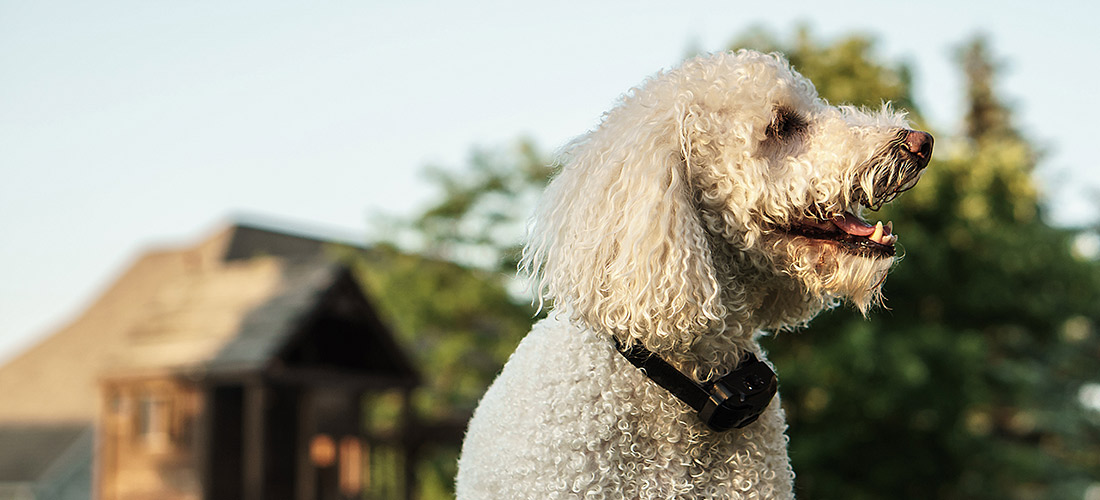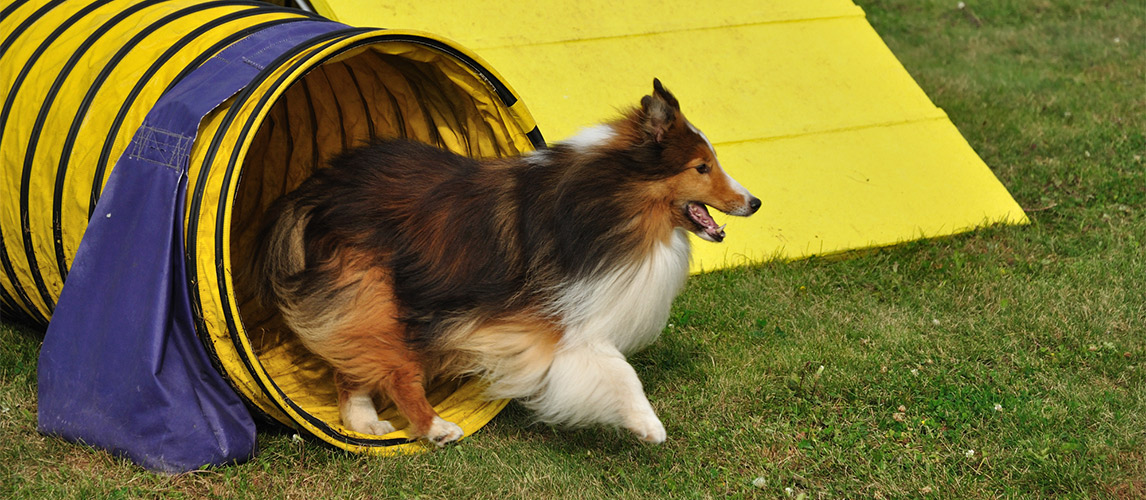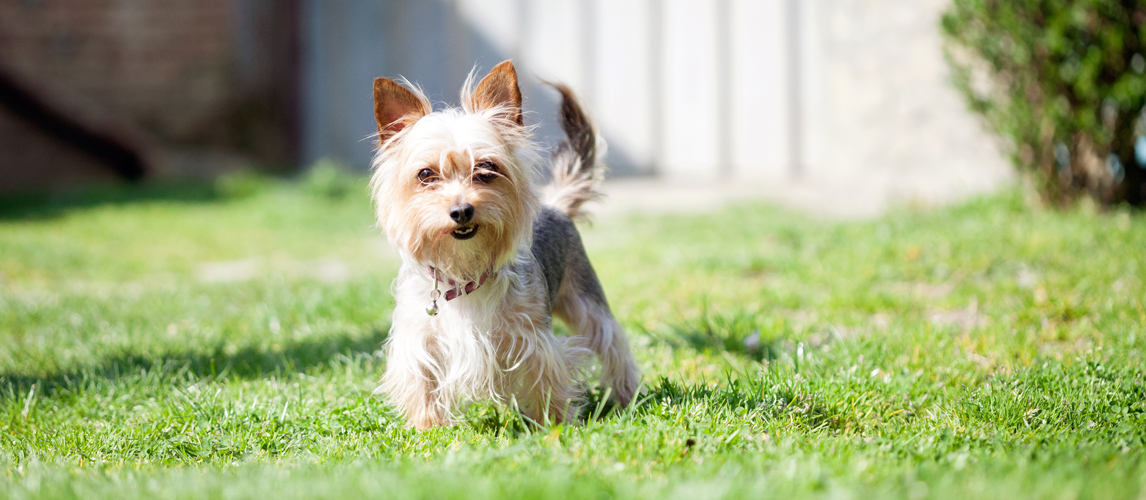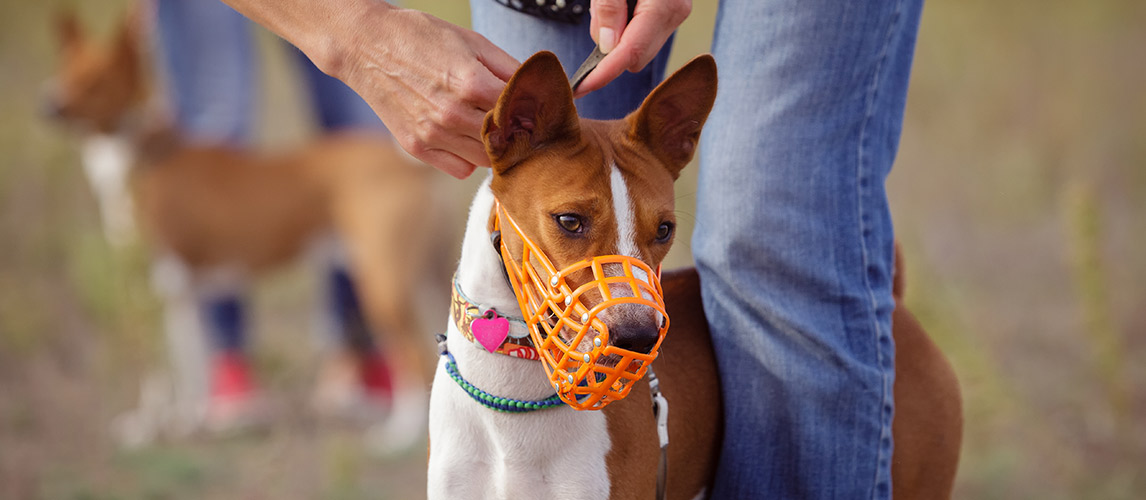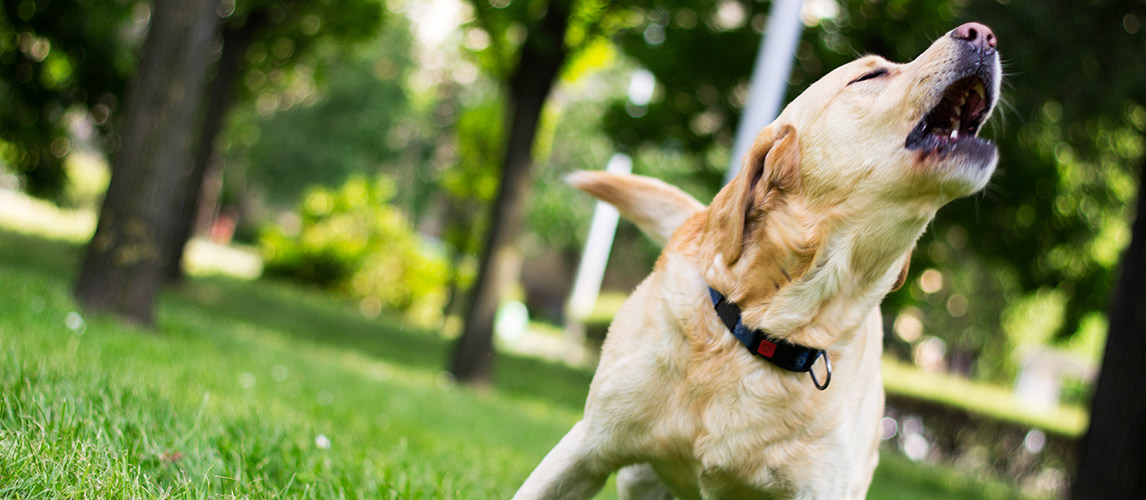Like many other animals, dogs have a lot of innate urges that are difficult for them to control without any training. With dog impulse control training, your dog will start to exhibit calm behavior when around things that trigger their natural impulses. If your dog is a pet that has trouble around cats and other small animals that they like to chase, impulse control exercises may be the perfect addition to your existing dog training.
What is Impulse Control?
A dog’s impulse control is their skill of resisting things that set off their urges. These urges take several forms and can be seen in your dog’s default behavior even when they aren’t having their impulses triggered. To teach your dog how to control these urges is to teach them how to better thrive in their environment. You’ll also be giving your dog ways to keep itself safe when you’re not looking.
A dog trainer uses their training to help dogs learn better impulse control and become more trusted members of society. A dog with poor control of their urges is more likely to chase after a person or another dog, which can lead to disastrous results in some cases. Most dogs do not naturally remain calm when in a dog park with other dogs, they must be trained to become a well-behaved dog who can play with others without giving in to their urge to act on their impulses.
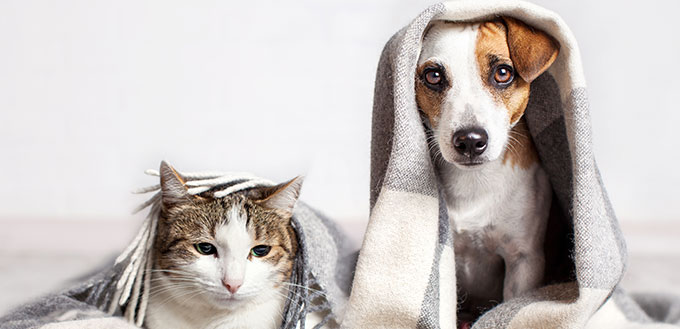
Does My Dog Have Poor Impulse Control?
When helping your dog learn impulse control is a goal that you have set for your family, consider observing your dog to see what triggers their urges and impulses. Some dogs are naturally higher energy than others, and this may make them seem like they have poor control over their urges. Look for your dog’s triggers and make a note of any that you see. These notes will become useful later after you start working with your dog to control how they behave.
Some triggers include:
- Cats
- Squirrels
- Other dogs
- Cars
- Doorbells
- Visitors entering their home
- Strangers
This list is by no means exhaustive, but it speaks to the largely distracting environment that dogs experience. The last thing any dog owner wants is for their pup to start chasing cars down the street and getting hurt because they can’t resist the allure of a big, strange, fast-moving thing.
When your dog starts to become overly excited, that’s when you should be paying the most attention to them and the potential hazards around you both. Excitable dogs often have bad control of their impulses, as do young dogs and dogs with no obedience training.
Why Dogs Need to Learn Impulse Control
Dogs who can control their impulses are less likely to show bad behavior that can get them into trouble or cause problems at home. When a dog runs out of an open door and into the street, they become a hazard to drivers, cyclists, and other dog owners. Dogs should not be off-leash in public unless they are extremely well-trained, and even then, they should only be off-leash in dog parks or specified off-leash areas. Imagine that your dog gets out of your front door in a moment where you are distracted. Do you notice and give chase immediately? Or has your distraction given your dog time to run out and become a hazard to cars driving down the street? This is the reality of an untrained dog who has no impulse control – they will not wait politely for you in any situation they can take advantage of.
Think of your untrained dog like a baby who doesn’t understand what “no” means yet. Babies, before they develop critical thinking skills, give into any and all of their urges. They cry and scream for everything they want. A dog will no impulse control is similar; they will do what they want when they want to because they don’t understand that they shouldn’t.
When you choose to work on a specific behavior with your dog, you’re helping them gain critical thinking skills. They will develop the tools needed to think before they act and listen to your commands. Dogs with impulse control understand “no”. The more you train them, the more you will see their positive responses gradually increase until there’s little undesirable behavior left. A well-trained and happy dog is the sign of a good, committed owner.
Check out some of our dog leashes guides, such as hands-free dog leashes, double dog leashes, dog bike leashes, and retractable dog leashes.
If that isn’t enough to convince you to commit to teaching your dog impulse control, here are several scenarios that can be fixed with impulse control training:
| Issue | Training | Outcome |
|---|---|---|
| Dog pulling leash | Leash training | Controlled walks |
| Dog runs out of door | Wait/sit command | Dog stays put |
| Dog won't wait for food | Wait/sit command | Dog will wait for food |
| Dog chases other animals | Wait/sit command | Dog will cease actions |
| Dog gets distracted | Leave it command | Dog pays attention to you |
| Dog is overexcited | Settle down command | Dog will calm |
All of these issues in the above table can be resolved with various kinds of impulse control training. Impulse control isn’t just telling your dog “no”, it’s a range of training techniques designed to evolve the thinking and understanding processes that your dog goes through.

Teaching Dogs Impulse Control
When teaching impulse control for dogs, you are dedicating yourself to helping your dog become a better version of themselves. This kind of training can’t be completed in just a few seconds; you will need to steadily train your dog over a period of time, or you’ll see few positive results from the training that you do commit to.
Dogs react best to positive reinforcement. This includes the use of tasty dog treats – not as a bribe to force your dog to do what you want, but as a way of thanking them for listening to your request. Do not consider yourself the alpha of your dog. You aren’t there to punish them or make them listen to you. You’re needed to bring out the best in your pup and give them a set of polite behaviors that they can use in place of their wilder urges.
How to Start Teaching Your Dog Impulse Control
Have a sneaky dog who is prone to stealing food and escaping through the crate door the second you open it? When you train dogs, you change their “normal” behavior set to one that is calmer and more suitable for the outside world. You give your dog the tools to behave in any situation, which can save you hundreds of dollars in vet bills and home costs. There’s no such thing as bad dogs, just owners that haven’t taken the time to teach dogs the skills they need in their lives.
To start your dog’s journey down this new road, you will need to help your dog learn acceptable ways of reacting to situations that would usually set off their urges. When you’re working together on this task, pay attention to the way your dog moves and their facial expression. Your dog drops more hints about their upcoming actions than you may think.
Getting started means watching your dog for long periods of time. You can do this by physically watching over them during the day or setting up nanny cameras in areas of the home that they seem to have the most problems. By doing this, you can identify what is causing your dog to act out and give in to their impulses.
Once you know what’s causing your dog to become uncontrollable or excitable, you can begin the process of helping your dog relearn how to react to that thing.
Set Realistic Goals
Don’t try to rush through your dog’s training or expect them to be able to change their behavior straight away. Impulse control training takes time, but when your dog understands what you’re asking them to do, you’ll know that you’re going a good job.
Some situations make dog training difficult. There are many reasons that your dog may not be picking up what you’re asking of them. When this happens, stay calm, try a few repetitions of the same task, and then take a break. Forcing your dog to work with you when they’re tired is just going to frustrate you both.
Other reasons your dog isn’t responding to your training:
- Distraction
- Illness
- Fear
- Anxiety
- Stress
- An inexperienced trainer
- Stubbornness
- Bad training methods for your dog
Not all dogs respond to the same type of training and some dogs are more trainable than others. Typically, there are two major types of dogs: Those who love to work and those who don’t. A dog that likes working is one that is highly trainable, happy to listen to commands, and will be sitting calmly while they wait for you. A dog who doesn’t like to work will ignore you, avoid eye contact, act stubborn, and is more likely to walk off instead of interacting with the training regimen.
Tips for training a dog who won’t work
- Go slowly. Stubborn dogs won’t respond to new training with any sort of speed.
- Start by giving your dog familiar commands or play fetch with them. These are behaviors that they already know, and they will help your dog get into the right mindset.
- Only change one part of their training at a time when you introduce something new – that includes adding distractions to see how they react when being commanded.
- Control the environment that you train your dog in. A dog park will be far too much for your pup when you start training them.
- Put away any of your dog’s toys and keep them out of sight when training, this will help them focus.
- Be consistent with your training and commands – ask your family members to check they’re commanding your dog in the same way you do.
- Do not punish your dog. Punishment leads to anxiety, stress, and fear. The second you start punishing your dog is the second you lose their trust.
- Use reward-based training, including treats.
- Give rewards that you know your dog likes, but are different from the ones you may offer them in normal situations.
- Train your dog regularly and make training a habit so that they expect it.
- Learn dog body language, including how to use eye contact and what reactions to expect.
Make Use of Clicker Training
Using clickers during training can be a great way to get your dog’s attention and help them learn new skills and behaviors. You may have seen a lot of televised dog trainers teaching families how to effectively use clickers, and that’s because clickers are proven to be a positive form of training for dogs that a family member of any age can get involved with. They aren’t a negative part of training for dogs, and that makes them the perfect tool to have on hand.
To utilize clickers in your impulse control sessions, you can complete a simple exercise that involves a clicker and some dog treats.
Hold an item that your dog wants, such as a favorite tug toy or treat, and lift it up out of your dog’s immediate reach. Ask your dog to sit and repeat the verbal cue until they comply. Once they sit calmly, offer them a treat, and give them their training toy. If you used a treat to entice them, just give them that same treat. This type of positive reinforcement teaches your dog that they are rewarded when they listen to your commands. It also teaches them that sitting when asked is a positive behavior.
There are plenty of other ways to use dog training clickers during impulse control activities, too.
The Best Impulse Control Exercises
Impulse control dog training can involve several exercises that your dog may benefit from. Remember that dogs don’t have a “one size fits all” approach when it comes to training because they’re all unique beings with their own personalities and habits. Teaching your dog self-control with impulse control games and exercises will keep your dog calm, happy, and give them a more fulfilling life.
5 Impulse Control Games for Dogs
Here, we’ve gathered five of our favorite impulse control games for dogs to enjoy with their humans. These games are simple enough for children to play with the family dog, so the parents don’t need to do all of the work while training the pup.
1. Yes Clicks
This game works best with small, healthy treats or pieces of kibble because of how much you can end up rewarding your dog during the day.
Every time you see your pup doing something that you consider good behavior, click your clicker and give them a treat. Your dog will quickly associate those good behaviors with rewards. If you don’t have a clicker, you can simply say “yes” or “good boy/girl”.
A game like this is a great exercise that the entire family can get involved with. Multi-packs of clickers are inexpensive and easy to find online, so everyone in your household should have one on their person. Be sure to check in with your children from time to time to check that they aren’t rewarding the wrong types of behavior.
2. Leave it
Teaching your dog the “leave it” command can be done using game methods that entice your dog into changing the object of his attention.
To start this exercise, it’s best to have your dog on a leash before attempting the same game off-leash. When leashed, throw a treat out of reach of your dog and keep a tight hold on him. Be sure you’re using the correct type of leash for your pup – you shouldn’t be using a common collar leash at all, these can be dangerous for your dog. Invest in a harness leash that is suitable for your pup, and attaches in the front.
Wait until your dog stops pulling on the leash and looks at you. At this moment, you should give your dog a second treat before letting him walk towards the first. Be sure to use the voice command “leave it” when waiting for your dog to stop pulling the leash, or he won’t have any verbal command to attach to what you’re teaching him.
You may also like our dog harnesses guides, such as Dog Harnesses for Running, Dog Lift Harnesses, Chihuahua Harnesses, LED Dog Harnesses, and Puppy Harnesses.
3. A quick U-Turn
You’ll need a clicker, your dog, and a leash to get this game going. Start out at home so that your dog feels safer and more comfortable than they do when they’re on walks and there are strange dogs out and about.
Walk a few steps with your dog, then immediately turn and walk back in the opposite direction. Click to get your pup’s attention as you turn and offer her a treat when she clearly starts walking after you again. Once she begins to get the idea of the game, add in a verbal command like “this way!”. You’ll be able to phase out the clicker soon after.
After the hallway, try this in your backyard. Then try it with distractions like toys or your children or partner. The next step after that would be going out in front of your house during a quiet part of the day and having a friend and their dog come towards you.
You can also practice the “leave it” command while teaching your dog to obey your walking directions. This exercise will keep your dog by your side during walks. It’s not the formal heel command, but it’s a good start.
4. Doorstop
This game will require your pup to already be familiar with the “sit” command. Once your dog is seated, give them a treat for listening, and then go and open the door slowly while watching them. If they start moving to get up and bolt, shut the door again and move them back to their starting position.
When they start getting the hint and decide to stay seated, toss them a treat and keep going. Be sure to only start this exercise during quiet times of day, just in case you own a slippery pup who’s likely to get out onto the street as soon as the door creaks open.
5. Play fetch
A staple game for any dog, but we wonder if it’s something that all dog owners use correctly. Playing fetch is a great way to keep your dog active, but it can also be used as a learning tool. When playing fetch together, you can teach your dog that they must be calm and seated before you’ll throw the dog ball or frisbee for them.
This works by using the “sit” command and waiting until your dog stops barking before you throw their toy for them. It’s not necessary training, but it definitely helps with impulse control and will teach your dog that unnecessary barking won’t get them anywhere.
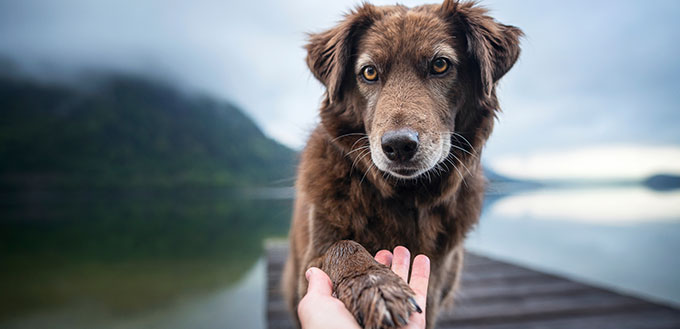
Training a New Puppy
A puppy may seem more difficult to train, but puppies are just as acceptable to impulse control training as older dogs – if not, more so! Puppies are eager to learn, though they can be wiggly and excitable. You’ll find yourself taking time to wait patiently while your puppy learns what you’re asking them to do without getting distracted by every new thing around them.
By starting training early, you can help your puppy learn good behaviors from the get-go, including voice commands, proper walking techniques, and yes, strong impulse control. Always start training sessions in a quiet room of your home that your puppy has been in before, with no one else around unless you need a second pair of hands. Treats go a long way in training, so have plenty of them, but keep them out of your puppy’s reach.
Break up long training sessions so that your pup doesn’t get overwhelmed or confused – in addition to this, try to avoid teaching your puppy more than one new command each day. You don’t want them mixing “sit” up with “fetch”, after all.
FAQs:
Q: When can I start training my dog’s impulse control?
A: A puppy can start being trained in voice commands from as young as 8 weeks old, but formal dog training typically starts around the time the dog is 6 months old. At 6 months, they’ll have the basics down, and they can progress into impulse control exercises from there. Consider potty training an impulse control test run!
Q: Why are some dogs so stubborn?
A: Some dog breeds are naturally more stubborn than others, but no dog is beyond training. You’ll find that most stubborn or hardheaded dogs simply haven’t been trained well in the past, and this has led to bad habits as they’ve gotten older. There are also dogs that just don’t enjoy working as much as others do, and this can come off as a dog who has a stubborn personality. The reality is that they need training in a different way.
Q: How do I make my dog listen to me?
A: Getting your dog to listen to you can feel like a behemoth task, but it’s not impossible. Appeal to your dog’s love of treats, pets, and positive feedback. Dogs don’t like being told off, yelled at, and should never be struck. Positive reinforcement is always the way forward with dog training.


